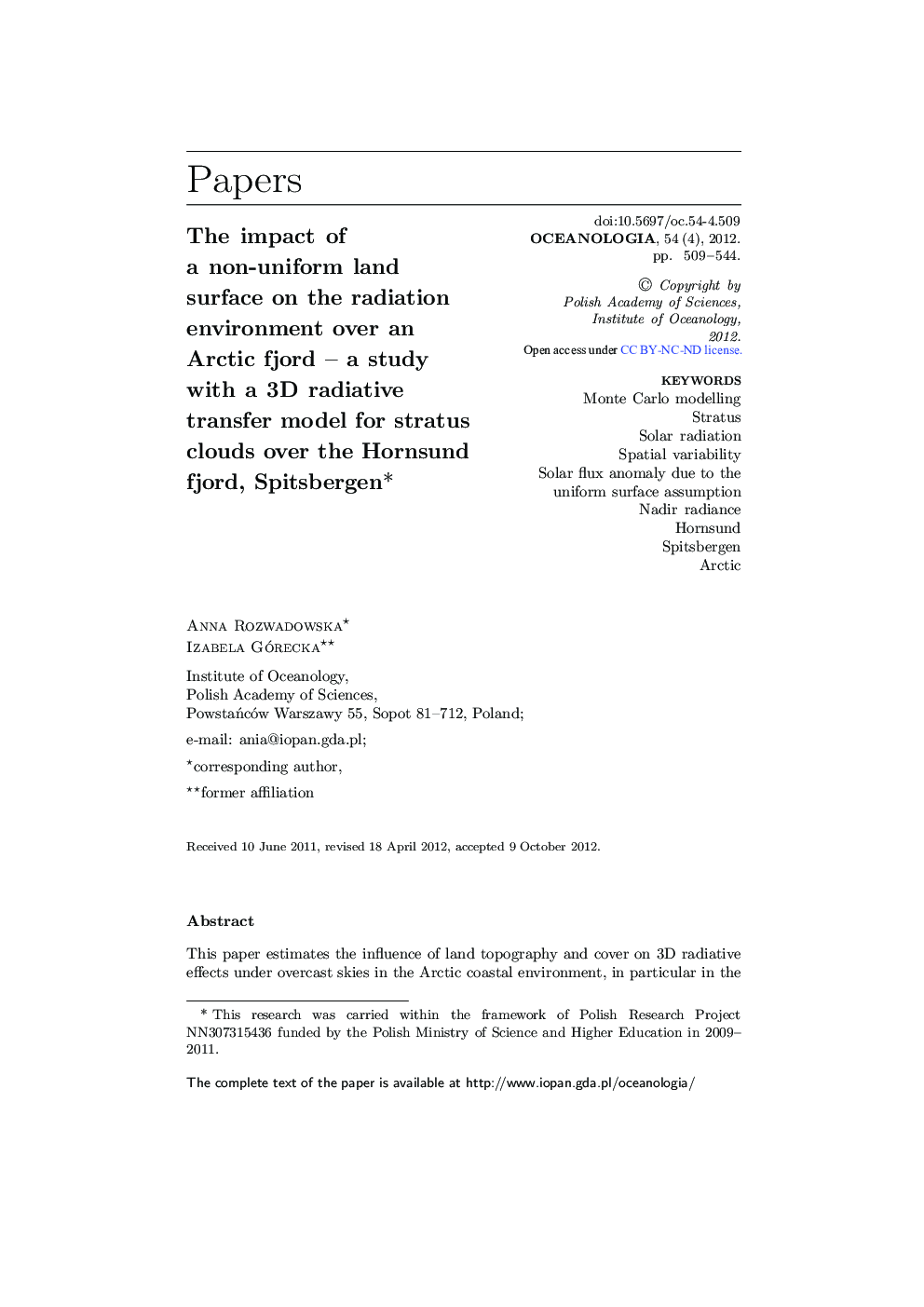| Article ID | Journal | Published Year | Pages | File Type |
|---|---|---|---|---|
| 2069730 | Oceanologia | 2012 | 36 Pages |
This paper estimates the influence of land topography and cover on 3D radiative effects under overcast skies in the Arctic coastal environment, in particular in the Hornsund fjord region, Spitsbergen. The authors focus on the impact of a non-uniform surface on: (1) the spatial distribution of solar fluxes reaching the fjord surface, (2) spectral shortwave cloud radiative forcing at the fjord surface, (3) the solar flux anomaly at the domain surface resulting from the assumption of a uniform surface, i.e. the error due to plane parallel assumptions in climate models, and (4) remote sensing of cloud optical thickness over the fjord. Their dependence on spectral channel, cloud optical thickness, cloud type, cloud base height, surface albedo and solar zenith angle is discussed. The analysis is based on Monte Carlo simulations of solar radiation transfer over a heterogeneous surface for selected channels of the MODIS radiometer. The simulations showed a considerable impact of the land surrounding the fjord on the solar radiation over the fjord. The biggest differences between atmospheric transmittances over the fjord surface and over the ocean were found for a cloud optical thickness τ = 12, low solar zenith angle ϑ, high cloud base and snow-covered land. For τ = 12, ϑ = 53°, cloud base height 1.8 km and wavelength λ = 469 nm, the enhancement in irradiance transmittance over the fjord was 0.19 for the inner fjords and 0.10 for the whole fjord (λ = 469 nm). The land surrounding the Hornsund fjord also had a considerable impact on the spectral cloud radiative forcing on the fjord surface and the solar flux anomaly at the domain surface due to the uniform surface assumption. For the mouth and central part of the fjord the error due to the use of channel 2 of the MODIS radiometer (λ = 858 nm) for cloud optical thickness retrieval was < 1 in the case of low-level clouds (cloud base height 1 km, nadir radiance, ϑ = 53°, cloud optical thickness retrieved solely from MODIS channel 2). However, near the shoreline (up to 2 km from it), especially over the inner fjords, the cloud optical thickness was then overestimated by > 3 for τ = 5 and by > 5 for τ = 20.
